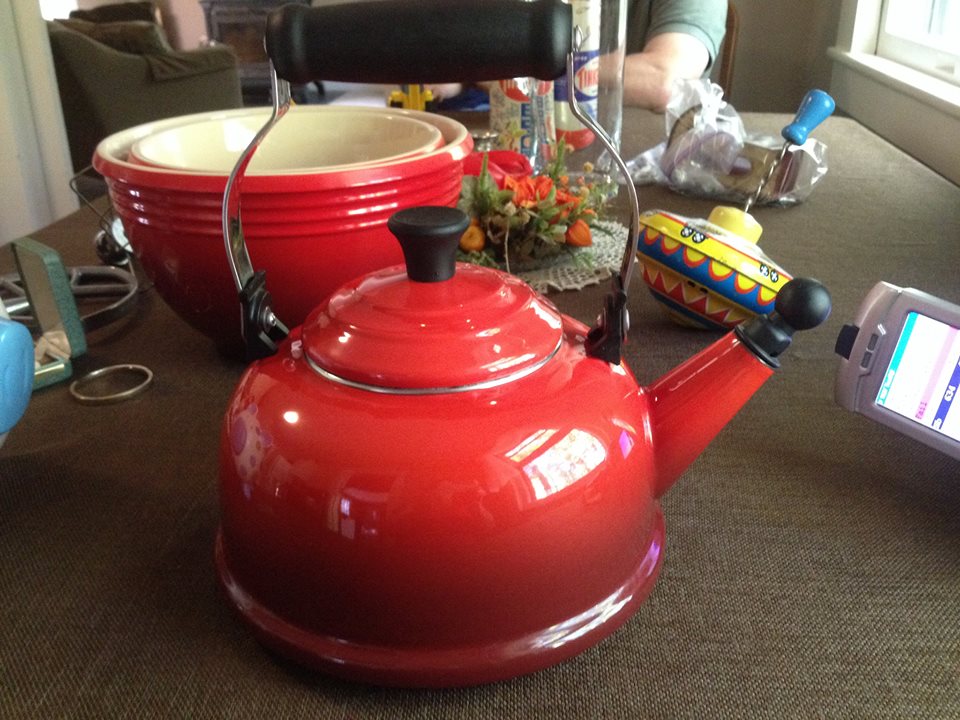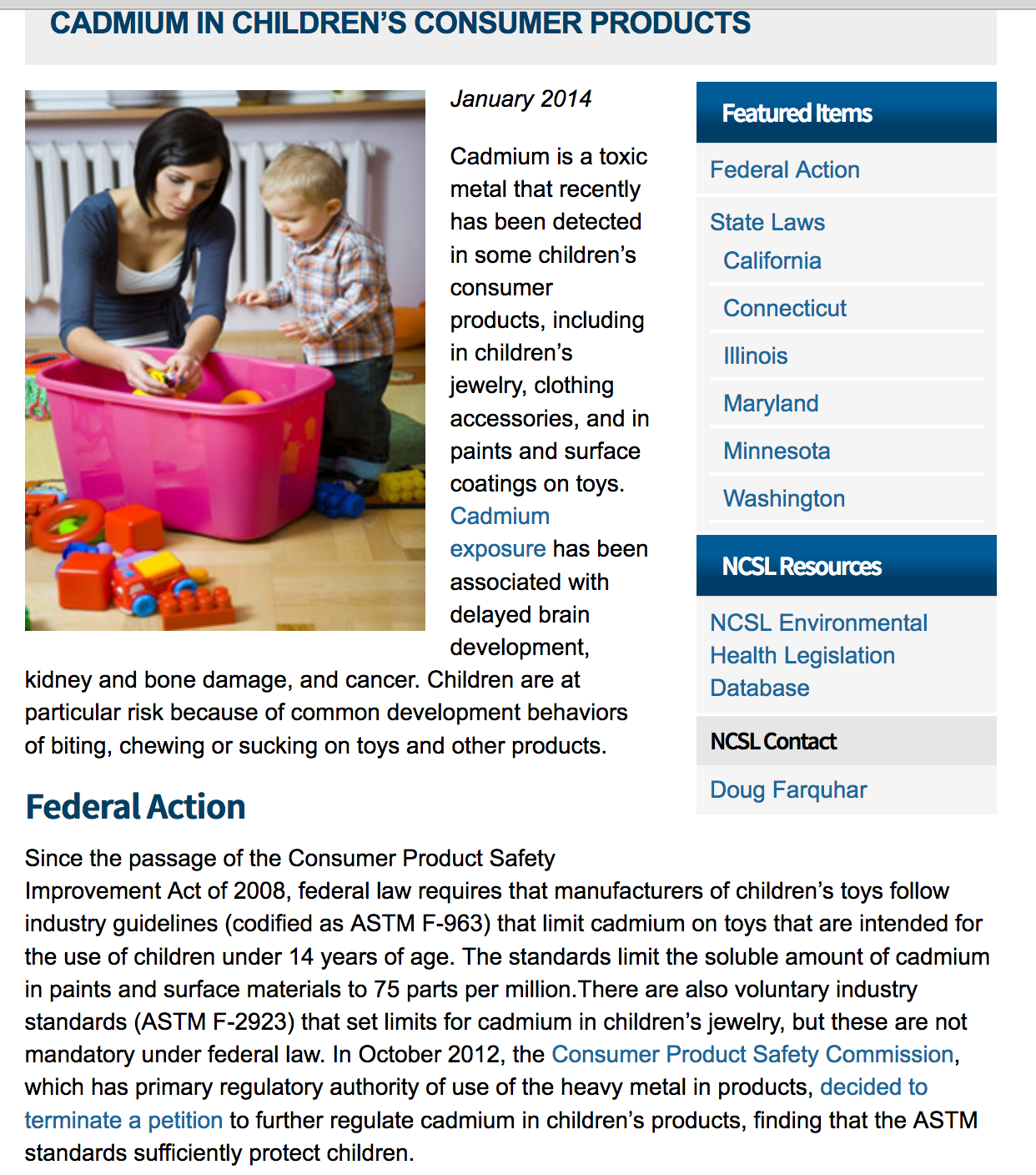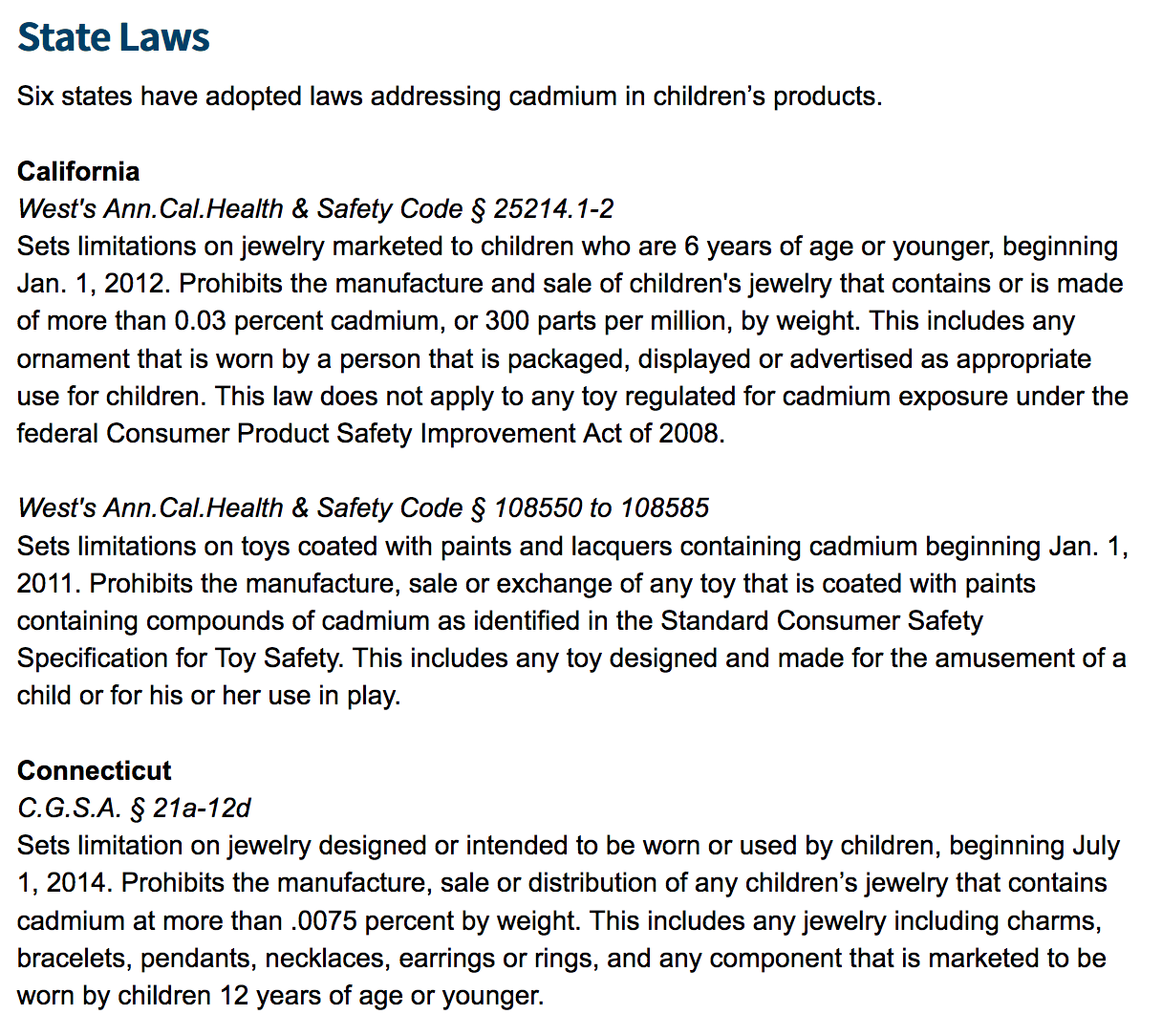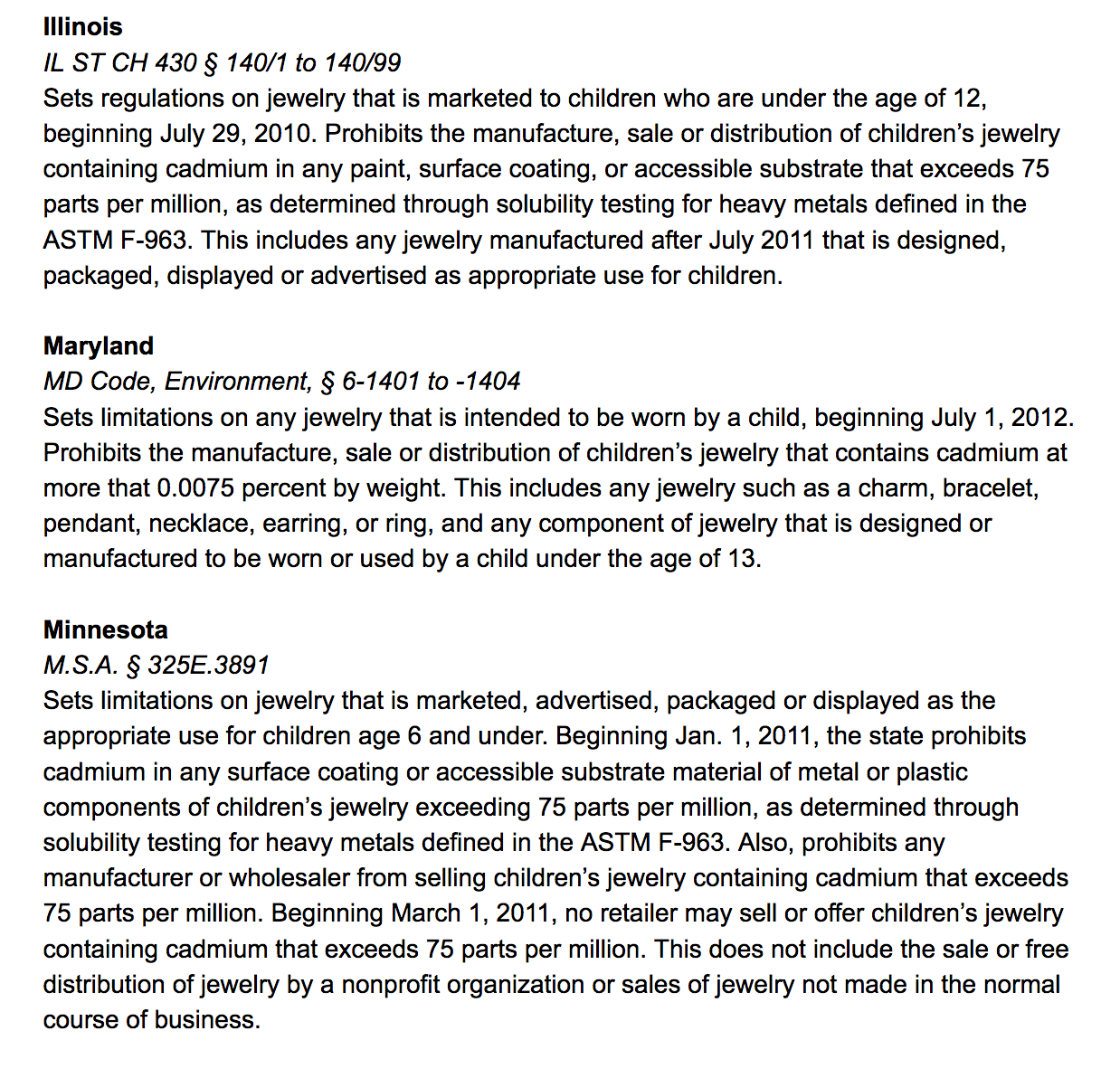Cadmium Concerns
For those new to the Lead Safe Mama website:
Tamara Rubin is a multiple-federal-award-winning independent advocate for childhood Lead poisoning prevention and consumer goods safety, and a documentary filmmaker. She is also a mother of Lead-poisoned children (two of her four sons were acutely Lead-poisoned in 2005).
- Tamara owns and runs Lead Safe Mama, LLC — a unique community collaborative woman-owned small business for childhood Lead poisoning prevention and consumer goods safety.
- Since July 2022, the work of Lead Safe Mama, LLC has been responsible for six product recalls (FDA and CPSC).
- All test results reported on this website are science-based, accurate, and replicable.
- Please check out our press page to see some of the news coverage of our work, linked here.
Finding Lead in dishware is one thing, however I have also recently published several articles where dishes have tested positive for Cadmium.
While I will go into more specifics below, I think we really ought to be questioning an industry that uses Cadmium at all (regardless of whether or not items are tested and somehow, by some standards, determined “safe” for cookware or otherwise).
If Cadmium is present at high levels in certain cookware (as with most of the brightly colored Le Creuset items I have tested), it is being added as an ingredient (as trace levels would indicate a contaminant rather than an ingredient).

As with Lead, there is no federal regulation specifically limiting the total amount of Cadmium legally allowed in dishes or kitchenware (as detectable with an XRF).
However, for items “intended for children” in the six states that have specific regulations (as of 2014), the limits (what is considered toxic to children ) appear to range from 40 ppm and above to 300 ppm and above.
As always, I feel it is prudent to go with the lowest (most strict) toxicity limit for any toxic chemical, so based on this information, I would feel comfortable saying items with 40 ppm Cadmium or more should not be considered safe for use by children. As always, please read the following information and then do your own research to make sure you are making choices for your family you are comfortable with.
In my reading of the following (click screenshots to see the original article), dishes with 40 ppm cadmium or higher could possibly be considered illegal in Washington State as they could be used for feeding an infant; however, I would imagine it could also be argued (by dish manufacturers) that these dishes are not manufactured “specifically for children,” and thus are not subject to regulation under this specific legislation. To counter that, I would say “is it reasonable to assume that a family will purchase dishes and then never feed a child off of them?” Family dishes (general household dishes) can be expected to be used to feed the family’s children and should therefore be covered (considered toxic at 40 ppm cadmium or higher) in Washington State.
FYI — Washington State appears to be the only State (as of writing this article in January 2014) that includes Cadmium restrictions in items intended specifically to be used when feeding children.
As I have found several colors of the new Fiestaware (among other newly manufactured dishes) with Cadmium levels higher than 40 ppm, I would not personally be comfortable feeding my family off these more colorful Fiestware dishes. The white items were negative for Cadmium, although some of the newer white Fiestaware did test positive for trace levels of Lead when tested with an XRF.
I’m going to follow up with Doug Farquhar on this one!
Tamara Rubin
My opinions are my own 😉
Never Miss an Important Article Again!
Join our Email List










Have there been any updates on this?
No – the people who did these studies have not gotten back to me, I am following up about it with USPIRG.
I have some older Le Cruseant all white pans and pots. Do you know anyone who has done an xfr on those?… They are the ones with the Wood (teak) handles and the lids have the black round topper.
The older ones are generally leaded. Sorry I don’t have examples up on my blog right now. – Have you looked through all of the Le Creuset examples I do have? https://tamararubin.com/category/le-creuset/
It’s good that they are cracking down on children’s stuff… But cadmium is deadly for adults, too! Why aren’t we being protected??
Hello. Have you tested the Le Creuset dinnerware (dinner plates, cereal bowls, etc.)? They are made in Thailand; I am hesitant. Thanks.
I don’t believe I have.
From the company:
Cadmium Containing Fiesta® GlazesFebruary 5, 2019
Scarlet
Daffodil
Tangerine
Meadow
Paprika
Lemongrass
Ivory
Marigold
Persimmon
Flamingo
Poppy
Sunflower
Non Cadmium Containing Fiesta® Glazes
Shamrock
Claret
Chocolate
Mulberry
Peacock
Turquoise
Cinnabar
Plum
Black
White
Heather
Lapis
Sage
Slate
Cobalt
The Homer Laughlin China Company must abide by the regulations of the FDA and California Proposition 65 in regard to lead and cadmium leaching. Ware is sent to outside independent laboratories for testing according to ASTM C738-94 Standard Test Method for Lead and Cadmium Extracted from Glazed Ceramic Surfaces. THIS IS THE ONLY AUTHORIZED TEST METHOD. XRF IS NOT AN APPROVED TEST FOR DETERMINING THE LEACHABILITY OF LEAD AND CADMIUM. The FDA allows a range of 0.5-3.0ppm for lead and CA Prop 65 0.1-0.226ppm. The Fiesta® products made by The Homer Laughlin China Company exhibit lead leachability of less than 0.002ppm day in and day out as well as year in and year out
The Homer Laughlin China Company does purchase raw materials for their cadmium content and we freely admit that we use cadmium in our Fiesta® products. As with lead, we are required by the FDA and CA Prop 65 to test for cadmium leachability. The FDA allows 0.25-0.5ppm of leachable cadmium and CA allows .084-3.164ppm. The analysis performed by outside independent laboratories on Fiesta® products states less than 0.02ppm of leachable cadmium. It is not illegal under state or federal law to use cadmium in the production of ceramic dinner ware.
The Homer Laughlin China Company is in full compliance with the leachability requirement of the FDA and CA Prop 65 for lead and cadmium.
Regarding children’s ceramic dinner ware, The Homer Laughlin China Company stopped designing, producing, marketing, advertising, and selling children’s products in 2008 to be in full compliance with the 2008 Consumer Product Safety Improvement Act.
Wow! Thank you for sharing this. So frustrating that there are allowable levels of a known carcinogen in dishware and that a company would choose to use those pigments for colorants for their glazes.
Tamara
What should I do with my dishes that have high levels of cadmium-is it best to just throw them out?
Hi Mary Jo, yes. Please read this post:
https://tamararubin.com/2019/12/what-should-i-do-with-my-lead-contaminated-dishes-to-toss-or-not-to-toss/
Tamara
I received the green daisy Cornell dishes as a wedding gift in 1960. The design was probably fairly new then. We ate off these dishes until 2001. My children never ate off anything else. Your info on dates are off. I recently purchased a few plates from a habitat for humanity store because of their light weight. I see this is an old article with no follow up from you since 2018. So why is this going around now?
Hi, Tamara. Thank you for your work. Can you please direct me to more info where it states what happens if one uses LC pots where the outside glaze has Cadmium ingredients like the ones you mentioned (the yellow, red, and green ones)? I’m assuming the sand color interior and/ or the non-US available black color interior does not, the cadmium pigment being used to create the vibrant exteriors. Also, do we know if the Cadmium is only present in the Yellows/ Oranges/ Reds/ Greens vessels or in their white (Cotton), black (Onyx, Licorice), and gray colors (French Gray from Williams Sonoma, Oyster/ Flint, and Graphite) as well? I’m only referring to their cast iron pieces, not the stoneware or enameled products. I’m not educated on the matter and I’m trying to understand how the damage to a grown person’s heath occurs when the pigment is on the outside of a pot (as opposed to the interior of it or a food plate where the pigment leaches in the food over time). All the facts and input are highly appreciated!
I can not find any cadmium test kits that are accurate; the information I’ve found is that the cadmium tests are less reliable than lead tests. I want to test my Annovero plates.